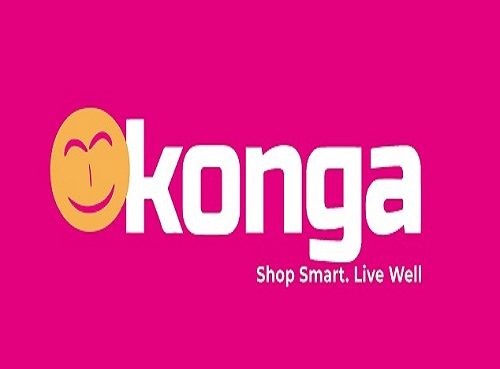Vice President, Sales (Africa) at UAE-based satellite company, YahClick, Michael Brown is not new to satellite development in Africa. With 19 years of Senior and Executive Management experience in the Sales and Marketing functions in the ICT, Cellular, Satellite and Logistics sectors, mostly around Africa, Brown considers himself, an authority in analysing African satellite situations and views his solutions as capable of proving enduring remedies.
Besides that,with a particular emphasis on the creation, expansion, and ongoing management of sales and service channels, he has a wealth of insight into the complex realities that affect the success of organisations in different territories across Africa.
No wonder he was emphatic is claiming that despite low adoption rate, satellite still bridges digital divide in Nigeria and other African countries.
There are number of issues, obviously on the social media platforms like Facebook, LinkedIn, Instagram, and the likes that are ongoing about satellite connectivity, but the truth is that we have been communicating to a lot of influential decision making people on this conversation. We recently had a conference and a two-day workshop in Abuja where we invited a number of resellers and partners to come and look at our technology. So I think it’s an ongoing awareness process, and we will continue to educate the masses on the importance of satellite and on our cost effective satellite broadband services.
Adoption rate of satellite connectivity is still low in Africa mainly because of the penetration of GSM in the urban areas. Video clips today can go viral because so many people have mobile devices. We operate broadband connectivity for the homes and offices and our satellite solution is not a mobile solution, but a fixed connectivity solution to a particular area and so in itself, decreases the numbers of sales. Satellite connectivity is a bit more expensive than an entry level phone or prepaid top solution. Again, the unserved and underserved areas don’t have the populace, and the human population matters. So ours is a niche market, and we will never say never or relent in our service offerings. Right now, the focus is not on high density urban areas where we have to compete aggressively with the incumbents. It is more around the unserved and underserved areas where there is little or no connectivity.
The perceived high cost satellite-based internet service is not just a Nigerian or African reality, but a global reality, because the cost prices on connectivity are driven by fundamental economic principles. So if you put up a cellular tower in a highly densely populated area, people will begin to imagine the revenue that will be generated, but the cost to sell those services is dramatically lower than providing coverage in a rural area that is 150 kilometres away from the nearest signal. So in cost issues, we don’t compete in urban areas against fibre and densely populated GSM terrestrial networks. Our focus is on the underserved. In other words, we compete in those peripheral environments where the GSM signal is weak and where fibre optic broadband players have not penetrated yet. So the fact that Nigeria, for example, has unlimited satellite broadband connectivity packages starting at N70,000 per month, cannot be said to be expensive, when compared with the cost of GSM and fibre optics internet connectivity.
The advantages are numerous. First of all satellite internet connectivity has instant connectivity but terrestrial fibre optic connectivity is limited to where the cellular signal is, which is where the fibre cable is laid. There is no other mechanism that connects to the internet like satellite. Again, the fact that you have this constant connection with the satellite beam, giving 99.9 per cent coverage, is huge advantage over fibre cable. For example, if you have power outages on your cellular cables or cellular towers, or have a fibre cable cut, you will not have connectivity, but satellite is always having 99.9 per cent uptime. From a cost perspective, a mobile device from Apple and other device manufacturers, may cost a lot but customers can get refurbished router for satellite internet connectivity that is as low as between $180 to $220, which can be modified for the neighbourhood environment.
I think the best example of how satellite is helping to bridge digital divide in Nigeria is our rural school environment initiative that seeks to provide connectivity to schools in rural communities where there is no connectivity. The initiative is in partnership with with the Universal Service Provision Fund, USPF. We will make the schools and territories Wi Fi enabled. The essence is to enable pupils and students have access to information and communicate with the outside world. The connectivity will give them access to mobile and web-based apps that drive the world nowadays, be it commercial apps like Amazon or Jumia or Konga.
That shows, to a large extent, the essence we exist as a business; to connect people, predominantly in the unserved and underserved areas. Terrestrial and fibre connectivity are expanding, but there will continue to be territories and geographical regions that do not have internet connectivity, due to practical commercial implications, geographical, political, and regulatory, among others. So, to solve 60 per cent of the world’s connectivity challenges, I don’t think it is purely a YahClick problem. However, it is the reason we exist to connect the underserved and the unserved and there is no other connectivity mechanism that can connect the world like YahClick.
We have three satellites in our fleet, we had the first one launched in 2010 which was Al Yah 1 then 2012 we launched the second one Al Yah 2, in 2018, we launched Al Yah 3. Each of them has increased speed, increased capacity, increased coverage. The third satellite enabled us to cover large portions of Nigeria which were largely uncovered. So, we now have full coverage. Al Yah 3 allowed us to cover the whole country as well as some of the surrounding areas: Ghana, Senegal, Ivory Coast, Uganda, West Coast of Africa, and we have launched a very progressive business in Brazil as well.
I’m not sure what the plans are for the next one. It will take a little while, but there will be a lot of capacity, improved performance and speed with what we have now, compared to when we had two. These three satellites, are they standing in silos or connected to each other? No. They are all on their own orbital slots. Satellite rotates in an orbital slot over the territories. The three are standing seperately. For instance Al Yah 2 and Al Yah 3 are targeted to Africa
The practical realities are that satellite is not a mobile solution, but a fixed solution that must come with a fixed router, and that is how our solution works. I think in the same vein, the top end devices are expensive and then there is the affordability cost, which is not a Nigerian problem, but a global problem, and particularly the African problem.
We use KA band globally in all the territories we operate. It has to do with technical engineering. KA band is more cost effective and more efficient on a particular spectrum. It is even more affordable and efficient to penetrate.
No. I think Nigeria in particularly a fair market. We’ve had little to no policy or regulatory challenges. However, we’ve also complied with all of regulations via our partners. I think some of the commercial realities in Nigeria impacting foreign companies are majorly in terms of Forex. It is not just about us. In terms of general regulatory ICT and communications policies, we’ve had very wonderful regulatory relationships.
I think you’ll see an ongoing reduction in pricing, the nature of technology, I think you’ll see the expansion in our distribution network via both wholesale partners and retail partners. There will definitely be in the next five years a change in that model and secondly our coverage from the reselling point of view will be much broader. We will show more presence in the continent.
Source: Vanguard










